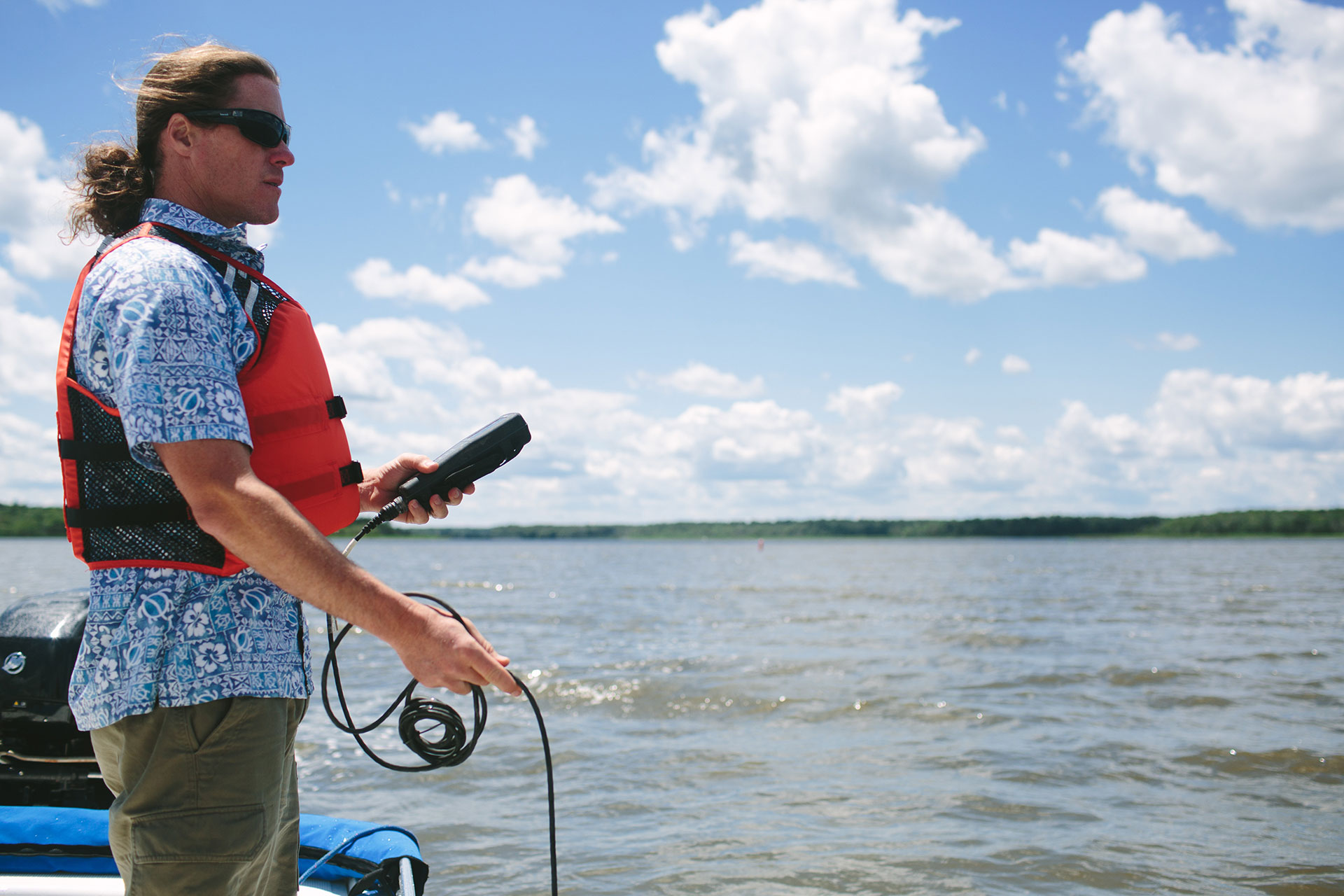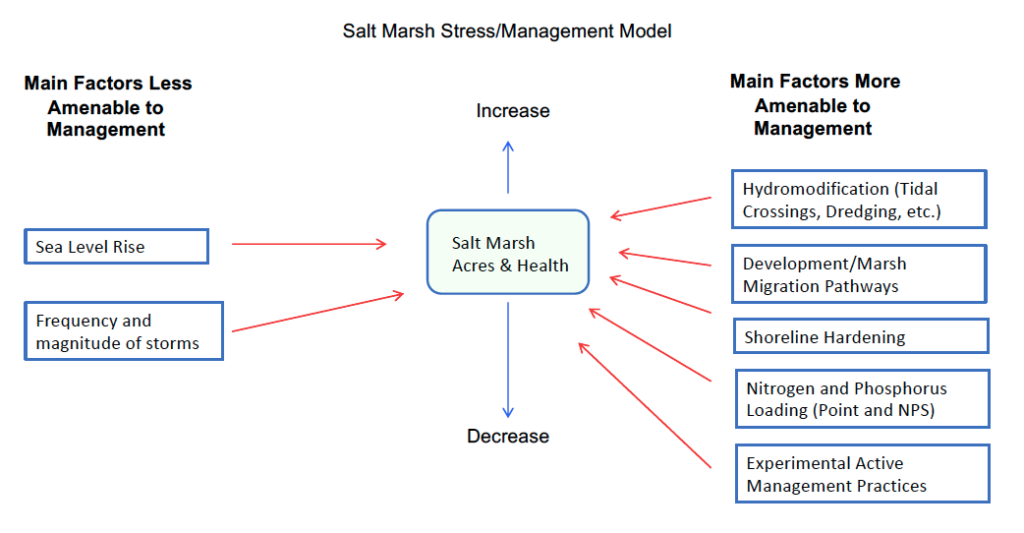PREP has made significant progress on its new integrated Research and Monitoring Plan (RAMP), which describes goals, science questions, and detailed methods on how to better understand changes to the Great Bay and Hampton-Seabrook Estuaries. A draft of the Plan that covers the first two phases (Goals and Questions) has been approved by the PREP Technical Advisory Committee (TAC) and is available online. The next two phases (see below) will be completed by 2026.
Unlike most monitoring plans, the RAMP will integrate research and monitoring. Monitoring questions track changes over time and research questions involve shorter term activities to understand trends in the long-term data. Since research and monitoring are both important aspects of understanding our estuaries, the TAC (co-chaired by UNH professors Bonnie Brown and Wil Wollheim) recommended that the two aspects of science should be integrated.
In order to meet the desired timeline, the RAMP will address the most critical issues facing the estuaries, but not necessarily all the ecosystem components. The five focus areas are: shellfish, eelgrass, salt marsh, fish, and humans. “Humans” will focus on the consumption of fish and shellfish as well as concerns regarding recreational water contact. “Shellfish” will focus on oysters and clams. Other important species such as lobsters and horseshoe crabs will be addressed in future revisions.
A key feature of the RAMP will be prioritization within each focus area. For example, the RAMP will note in which order monitoring and research activities focused on oysters should occur. This will enable scientists, managers, and other partners to better coordinate what activities are most critical in terms of proposal writing.
The RAMP has been developed through small groups of specialists according to each focus area. In addition, two external advisors – Jud Kenworthy of NOAA and Brad Peterson of Stony Brook University – have been and will continue to be involved throughout the development of the RAMP.
PREP’s last monitoring plan was published in 2008 and can be found at: https://scholars.unh.edu/prep/71/
Post updated October 19, 2023 to reflect updates and recent changes.



